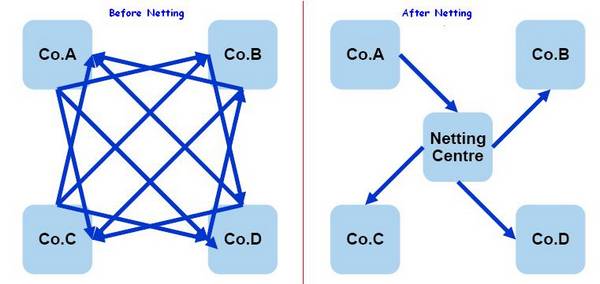How can Cash Management improve your Cash Conversion Cycle part III
| 07-10-2016 | Olivier Werlingshoff |
 This week an article about the underestimation of cash management on LinkedIn caught my attention. 50% of the companies even doesn’t see the added value of a good cash flow forecast! This does not surprise me and therefore gave me a reason to pick up the pen and write another article on how to improve your cash conversion cycle!
This week an article about the underestimation of cash management on LinkedIn caught my attention. 50% of the companies even doesn’t see the added value of a good cash flow forecast! This does not surprise me and therefore gave me a reason to pick up the pen and write another article on how to improve your cash conversion cycle!
In my two previous articles I gave some examples of how cash management could improve the DSO and the DIO but, what about the DPO? The DPO is an efficiency ratio that measures the average number of days a company takes to pay its suppliers. The more days, the better your cash conversion cycle will be.
Extend payment terms
The first action that can be taken is to extend your payment terms. In the payments barometer from Atradius of 2016 you can find an overview of all payment terms and average DSO for all countries in Western Europe. The reasons why payments are delayed are also mentioned.
The average given payment term to B2B customers in The Netherlands is 27 days, the average DSO is 42 days! Most of the time the first action that is taken when companies have liquidity problems is to extend their payments. The negative aspects of this action can be major. The first aspect is the impact this action has on your supplier, because he has to wait to receive his money. He will then have to look for alternative borrow possibilities. Besides the negative relationships, the extra costs will probably be include in his next price. Suppliers can also decide only to send you the goods when paid in advance.
As you can read this action can have a boomerang effect.
Reverse factoring
A possibility to extend your payment term without all negative effects is to use reverse factoring. With reverse factoring you give the possibility to your supplier to receive more favorable financial terms than they would have otherwise received for a loan.
The effect could be that the relationship between you and the supplier can be improved and you still can extend your payments.
Single payment solution
Another solution is to decrease your banking transfer time of a payment. If you have a lot of foreign suppliers, transfer times can easily be extended, especially when you need to use correspondent banks.
Using banks with an international presence as well as a single payment solution will facilitate you to follow your payment and use the fastest transfer method. By doing so, you can delay the moment of payment and still pay on time.
Within the EU you can make direct payments as a SEPA payment, because there are no borders anymore for money transfers. You don’t need local accounts anymore to facilitate and accelerate your payments.

Owner of WERFIAD


 Netting is mainly used by global operating companies with a large number of subsidiaries; the reach of netting can however also include smaller company structures and save a lot of handling and costs.
Netting is mainly used by global operating companies with a large number of subsidiaries; the reach of netting can however also include smaller company structures and save a lot of handling and costs.
 Jan Meulendijks – Cash management, transaction banking and trade professional
Jan Meulendijks – Cash management, transaction banking and trade professional Imagine it will be possible to transfer money within several seconds from any bank account to another bank account. 24 hours a day, 7 days a week. It will open large business opportunities enabling many innovative payments use cases.
Imagine it will be possible to transfer money within several seconds from any bank account to another bank account. 24 hours a day, 7 days a week. It will open large business opportunities enabling many innovative payments use cases. 
 Dear community members, we would like to bring something to your attention: TIPCO and TIS joined forces to organise a noteworthy webinar on the 7th of July: TIPCO & TIS: Streamlining Your Treasury Processes: Trends in Payments and Reporting.
Dear community members, we would like to bring something to your attention: TIPCO and TIS joined forces to organise a noteworthy webinar on the 7th of July: TIPCO & TIS: Streamlining Your Treasury Processes: Trends in Payments and Reporting. Hubert Rappold, CEO and Co-founder, TIPCO
Hubert Rappold, CEO and Co-founder, TIPCO Jörg Wiemer, CSO and Co-founder, TIS
Jörg Wiemer, CSO and Co-founder, TIS